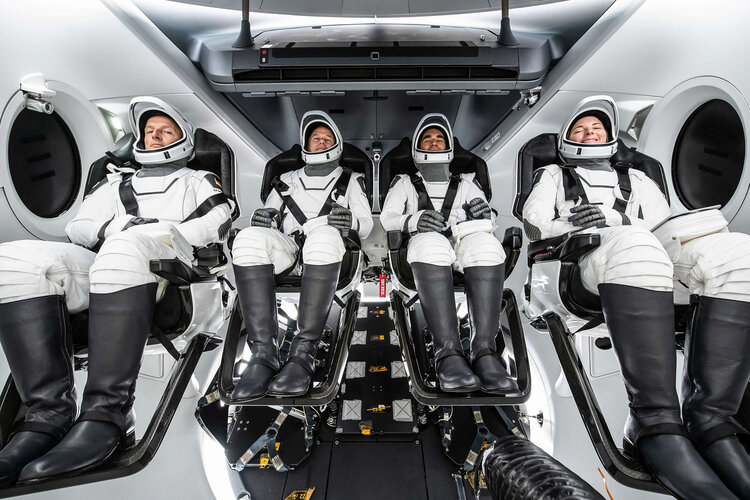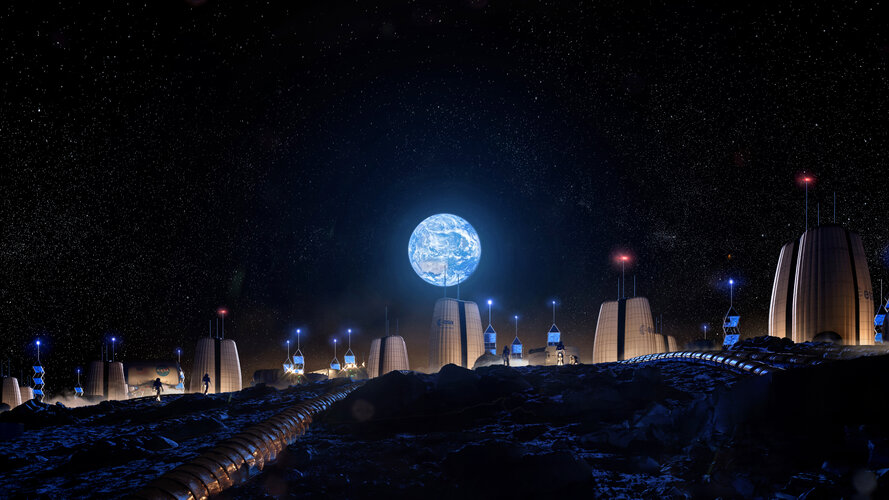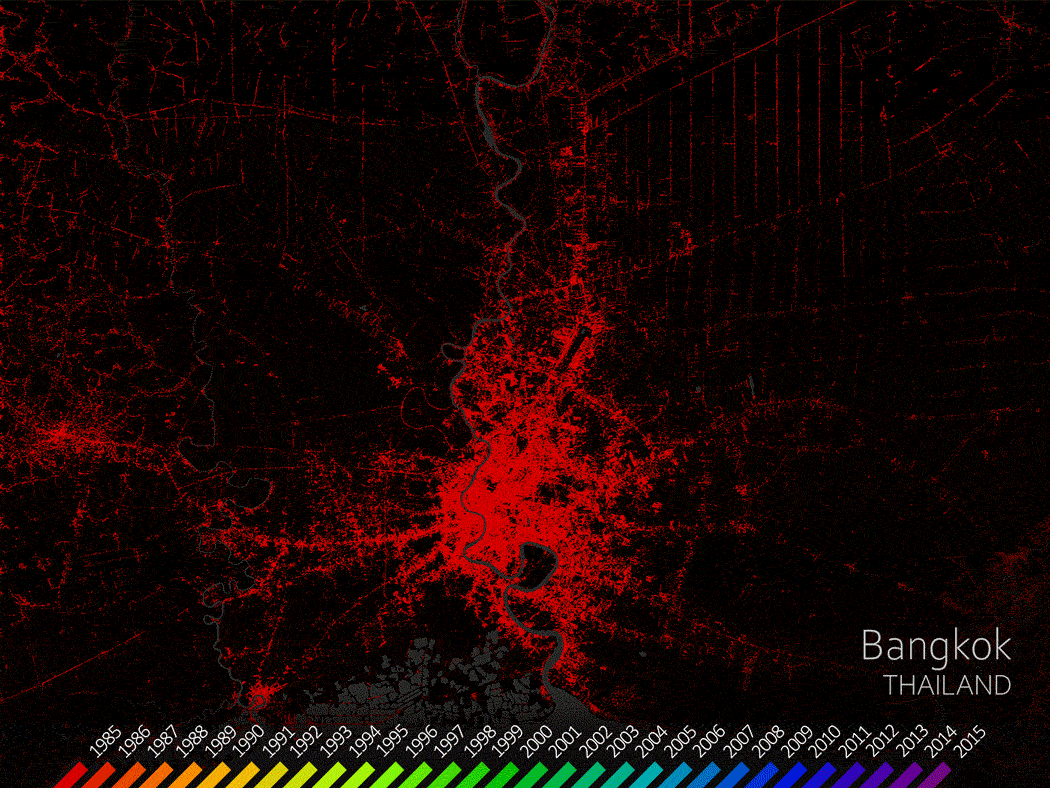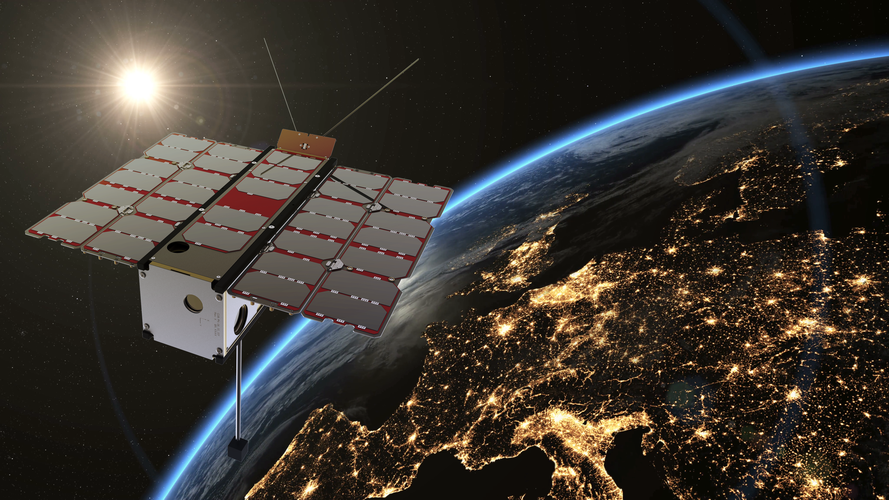
Copernical Team
Matthias Maurer arrives at the International Space Station
 With the launch of 'Cosmic Kiss', Matthias Maurer's long-cherished dream comes true. The Saarland native is the fourth German to travel to the International Space Station (ISS). He departed from Kennedy Space Center in Florida at 21:03 local time on 10 November 2021 (03:03 CET 11 November 2021). The 51-year-old materials scientist from Sankt Wendel has been a member of the European Space Agency
With the launch of 'Cosmic Kiss', Matthias Maurer's long-cherished dream comes true. The Saarland native is the fourth German to travel to the International Space Station (ISS). He departed from Kennedy Space Center in Florida at 21:03 local time on 10 November 2021 (03:03 CET 11 November 2021). The 51-year-old materials scientist from Sankt Wendel has been a member of the European Space Agency SpaceX capsule with crew of four docks with ISS
 A SpaceX capsule carrying four astronauts docked with the International Space Station on Thursday, kicking off a six-month stay on the orbiting outpost.
This mission known as Crew-3 is part of NASA's multibillion-dollar partnership with Elon Musk's space company, signed after the Space Shuttle program ended in 2011 and aimed at restoring US capacity to carry out human spaceflight, rather tha
A SpaceX capsule carrying four astronauts docked with the International Space Station on Thursday, kicking off a six-month stay on the orbiting outpost.
This mission known as Crew-3 is part of NASA's multibillion-dollar partnership with Elon Musk's space company, signed after the Space Shuttle program ended in 2011 and aimed at restoring US capacity to carry out human spaceflight, rather tha Russia successfully tests 'space radiation shield'
 Space radiation may ride roughshod over a satellite's electrical circuits and result in a full-fledged burnout of its onboard systems. This remains one of the main headaches for satellite manufacturers.
Specialists from the Russian Space Systems holding (RSS) have successfully tested a miniature device designed to protect the electronic onboard systems of state-of-the-art satellites from c
Space radiation may ride roughshod over a satellite's electrical circuits and result in a full-fledged burnout of its onboard systems. This remains one of the main headaches for satellite manufacturers.
Specialists from the Russian Space Systems holding (RSS) have successfully tested a miniature device designed to protect the electronic onboard systems of state-of-the-art satellites from c The Moon's top layer alone has enough oxygen to sustain 8 billion people for 100,000 years
 Alongside advances in space exploration, we've recently seen much time and money invested into technologies that could allow effective space resource utilisation. And at the forefront of these efforts has been a laser-sharp focus on finding the best way to produce oxygen on the Moon.
In October, the Australian Space Agency and NASA signed a deal to send an Australian-made rover to the Moon
Alongside advances in space exploration, we've recently seen much time and money invested into technologies that could allow effective space resource utilisation. And at the forefront of these efforts has been a laser-sharp focus on finding the best way to produce oxygen on the Moon.
In October, the Australian Space Agency and NASA signed a deal to send an Australian-made rover to the Moon Cosmic Kiss mission begins as Matthias Maurer arrives at the Space Station

The spacecraft carrying ESA astronaut Matthias Maurer and his NASA astronaut colleagues Raja Chari, Thomas Marshburn and Kayla Barron docked to the International Space Station at 00:32 CET Friday, 12 November (23:32 GMT Thursday, 11 November), marking the official start of Matthias’s first mission ‘Cosmic Kiss’.
Thomas during event from Space Station
 Image:
Thomas during event from Space Station
Image:
Thomas during event from Space Station Medical experiments in space

The SpaceX carrier rocket lifted off from NASA's Kennedy Space Center in Florida, U.S. early on Thursday morning, Central European Time. The 'Cosmic Kiss' mission's four crew members will travel to the International Space Station (ISS) on board a Crew Dragon capsule. They will remain on the ISS until April 2022. Joining his three NASA colleagues is ESA astronaut Dr. Matthias Maurer, the 12th German in space and the fourth German on the ISS. This will be the 51-year-old materials scientist's first-ever space flight, for which he has been training and preparing since April 2020.
During his mission, Dr. Maurer will conduct an array of experiments. Responsibility for the selection and coordination of the mission's German experiments rests with the German Space Agency at the DLR. All experiments have completed numerous testing stages, such as parabolic flights.
Off-Earth manufacturing symposium: how to build a new home in space

For long-term stays on the Moon and Mars, we would need to use local materials to build on location. Off-Earth manufacturing could be used to construct infrastructure that meets needs such as shielding crews and equipment from radiation, providing food and water, and generating electricity.
Mapping our human footprint from space

The world’s population is expected to reach 9.7 billion in 2050, according to the UN Department of Economics and Social Affairs. Urban areas are already home to 55% of the world’s population and that figure is expected to grow to 68% by 2050. Rapid and unplanned urbanisation, combined with the challenges brought by climate change, can lead to an increase in air pollution, higher vulnerability to disasters, as well as issues related to the management of resources such as water, raw materials and energy.
To improve the understanding of current trends in global urbanisation, ESA and the German Aerospace Center (DLR),
RadCube reaches out
 Image:
RadCube reaches out
Image:
RadCube reaches out 